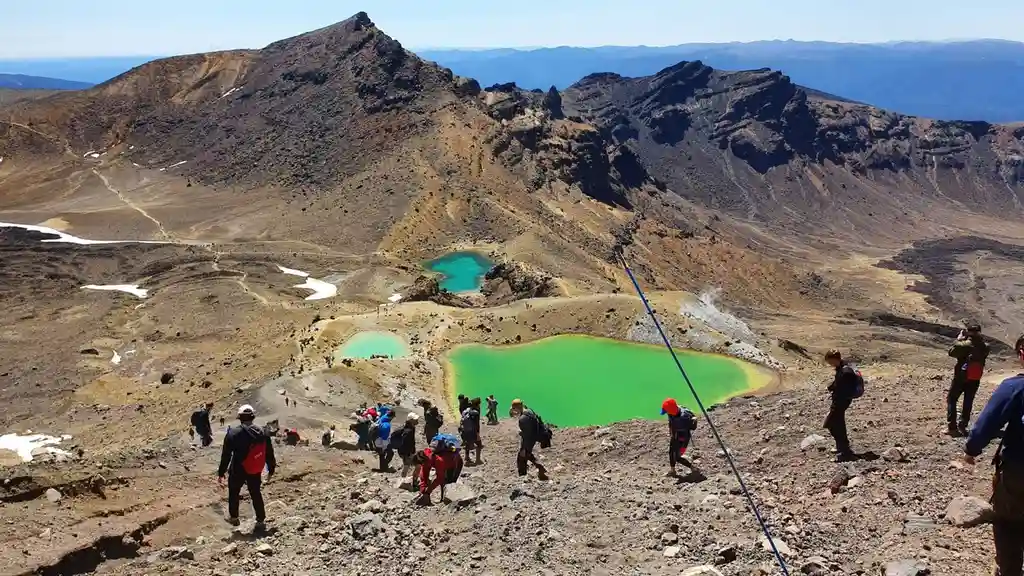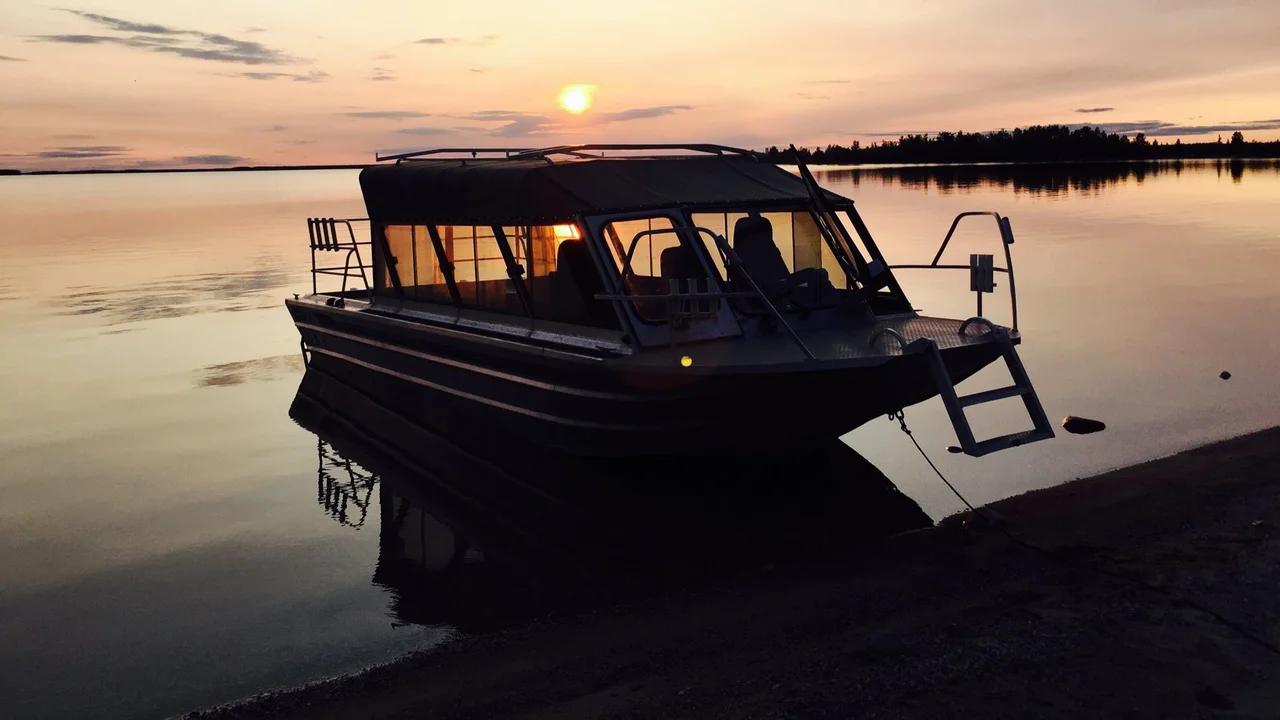Tongariro National Park: Hiking the Alpine Crossing
Sample meta description.

Introduction to the Tongariro Alpine Crossing New Zealand's Premier Hike
Alright, so you're thinking about hiking the Tongariro Alpine Crossing? Good choice! Seriously, this isn't just a walk in the park (well, technically it *is* a national park, but you get my drift). It's a full-on sensory experience. Think volcanic landscapes, emerald lakes, steaming vents, and views that’ll make your Instagram followers weep with envy. It's consistently rated as one of the best day hikes in the world, and for good reason. But before you lace up those boots, let's get real about what you're in for. This ain't a stroll to the coffee shop. It's a challenging, rewarding, and unforgettable adventure. We're going to cover everything you need to know, from what to pack to what to expect on the trail.
Planning Your Trip Best Time to Hike and Essential Permits
Timing is everything, especially when you're dealing with a mountain environment. The best time to hike the Tongariro Alpine Crossing is during the summer months (November to April). The weather is generally more stable, the trails are clear of snow, and the days are longer. However, this is also peak season, so expect crowds. Shoulder seasons (October and May) can be good too, but be prepared for colder temperatures and potentially icy conditions. Winter (June to September) is generally not recommended unless you're an experienced mountaineer with the right gear. Snow and ice can make the trail treacherous.
Permits: While you don't need a permit to *hike* the Tongariro Alpine Crossing, you *do* need to book transport or parking. Due to the popularity of the hike, there are restrictions on parking at the trailheads. You'll need to book a shuttle bus to drop you off at one end and pick you up at the other. There are several shuttle companies operating in the area, so do your research and book in advance, especially during peak season. Failing to do so could mean missing out on the hike altogether. This is especially important during peak season! Make sure to book well in advance.
Gear Up Essential Hiking Equipment for the Tongariro Crossing
Okay, let's talk gear. This is where you don't want to skimp. The Tongariro Alpine Crossing can be unpredictable, and being prepared is key to having a safe and enjoyable hike.
- Hiking Boots: Sturdy, waterproof hiking boots are a must. Make sure they're well broken-in before you hit the trail to avoid blisters. Look for ankle support and a good grip.
- Layers: Dress in layers. The weather can change rapidly, even on a sunny day. Bring a base layer (merino wool or synthetic), a fleece or down jacket, and a waterproof and windproof outer shell.
- Backpack: A comfortable backpack with a capacity of around 20-30 liters is ideal.
- Water: Carry at least 2-3 liters of water. There are no water sources along the trail.
- Food: Pack plenty of high-energy snacks, such as energy bars, nuts, dried fruit, and sandwiches.
- Sunscreen, Hat, and Sunglasses: The sun can be intense, even on cloudy days.
- First-Aid Kit: A basic first-aid kit with blister treatment, pain relievers, and antiseptic wipes is essential.
- Map and Compass/GPS: While the trail is well-marked, it's always a good idea to have a map and compass or GPS.
- Headlamp or Flashlight: In case you get delayed or start the hike before sunrise.
- Hiking Poles (Optional): These can help with balance and reduce strain on your knees.
Recommended Gear and Product Comparisons for the Tongariro Alpine Crossing
Let's dive into some specific product recommendations to make your hike even better.
Hiking Boots: Salomon X Ultra 4 Mid GTX vs. Merrell Moab 2 Mid Waterproof
Salomon X Ultra 4 Mid GTX: These are a great all-around hiking boot. They're lightweight, waterproof, and offer excellent support. They're ideal for day hikes like the Tongariro Alpine Crossing. Use Case: Hikers looking for a comfortable and reliable boot for moderate to challenging terrain. Pros: Lightweight, waterproof, good support, excellent grip. Cons: Can be a bit pricey. Price: Around $160-180 USD.
Merrell Moab 2 Mid Waterproof: A more budget-friendly option, the Merrell Moab 2 is still a solid choice. They're comfortable, waterproof, and durable. Use Case: Hikers on a budget who still want a reliable and waterproof boot. Pros: Affordable, comfortable, waterproof, durable. Cons: Not as lightweight or supportive as the Salomon X Ultra 4. Price: Around $100-120 USD.
Backpacks: Osprey Talon 22 vs. Deuter Speed Lite 20
Osprey Talon 22: A popular and versatile daypack. It's comfortable, lightweight, and has plenty of room for all your essentials. Use Case: Hikers looking for a comfortable and well-organized daypack. Pros: Comfortable, lightweight, good organization, breathable back panel. Cons: Can be a bit pricey. Price: Around $120-140 USD.
Deuter Speed Lite 20: A lightweight and streamlined daypack. It's perfect for fast-paced hikes where you want to minimize weight. Use Case: Hikers looking for a lightweight and minimalist daypack. Pros: Very lightweight, comfortable, good ventilation. Cons: Limited organization, not as durable as the Osprey Talon 22. Price: Around $90-110 USD.
Water Filters: Sawyer Squeeze vs. LifeStraw Personal Water Filter
While there are no water sources along the Tongariro Alpine Crossing, it's always a good idea to carry a water filter in case of emergencies. These are lightweight and can filter almost any water source.
Sawyer Squeeze: A versatile and reliable water filter. It can be used to filter water directly from a source or to fill a water bottle. Use Case: Backpackers and hikers who need a reliable and versatile water filter. Pros: Lightweight, durable, filters a large volume of water. Cons: Can be slow to filter water. Price: Around $30-40 USD.
LifeStraw Personal Water Filter: A simple and lightweight water filter. It's easy to use and requires no pumping or squeezing. Use Case: Hikers and travelers who need a simple and lightweight water filter for emergencies. Pros: Very lightweight, easy to use, affordable. Cons: Limited to filtering water directly from a source. Price: Around $20-25 USD.
On the Trail What to Expect During Your Tongariro Alpine Crossing Hike
Alright, you're geared up, you've got your shuttle booked, and you're ready to hit the trail. Here's a breakdown of what you can expect:
Mangatepopo Valley to Soda Springs Easy Start
The first section of the trail is relatively easy, following a well-maintained track through the Mangatepopo Valley. You'll pass by the Soda Springs, a small but pretty waterfall. This is a good warm-up for the more challenging sections ahead.
Devil's Staircase Steep Climb
After Soda Springs, the trail starts to climb steeply up the Devil's Staircase. This is the most challenging part of the first half of the hike. Take your time and pace yourself. The views from the top are worth the effort.
South Crater Lunar Landscape
Once you've conquered the Devil's Staircase, you'll enter the South Crater, a vast lunar landscape. The trail flattens out here, providing a welcome respite. Take some time to soak in the otherworldly scenery.
Red Crater Highest Point and Stunning Views
The next climb takes you to the Red Crater, the highest point of the trail. This is where you'll be rewarded with the most spectacular views of the emerald lakes, the volcanic landscape, and Mount Ngauruhoe (aka Mount Doom from the Lord of the Rings movies). Be careful here, the terrain can be loose and slippery.
Emerald Lakes Descent
The descent from the Red Crater to the Emerald Lakes is steep and challenging. The loose scree can make it tricky to keep your footing. Take your time and use your hiking poles for support. The Emerald Lakes themselves are a sight to behold – vibrant turquoise pools formed in old volcanic craters.
Central Crater Another Worldly View
From the Emerald Lakes, the trail continues through the Central Crater, another dramatic volcanic landscape. You'll pass by the Blue Lake (Te Wai-whakaata-o-te-Rangihiroa), a sacred lake with stunning reflections.
Descent to Ketetahi Carpark Long and Winding Downhill
The final section of the trail is a long and winding descent to the Ketetahi Carpark. This can be tough on your knees, so take your time and use your hiking poles. The views are still pretty good, but you'll be ready to reach the end.
Safety Tips Crucial Information for a Safe Hike on the Tongariro Crossing
Safety is paramount. Here are some essential tips to keep in mind:
- Check the Weather Forecast: Before you set out, check the weather forecast and be prepared for changing conditions.
- Start Early: Start your hike early in the morning to allow plenty of time to complete the trail before dark.
- Stay on the Trail: Stick to the marked trail to avoid getting lost or injured.
- Tell Someone Your Plans: Let someone know your hiking plans, including your route and expected return time.
- Carry a Cell Phone: While cell phone reception can be spotty in some areas, it's always a good idea to carry a cell phone in case of emergencies.
- Be Aware of Volcanic Activity: Tongariro is an active volcano. Be aware of the potential for volcanic activity and follow any instructions from park rangers.
- Know Your Limits: The Tongariro Alpine Crossing is a challenging hike. Know your limits and don't push yourself beyond your capabilities.
Respect the Environment Leave No Trace Principles
It's our responsibility to protect this amazing environment. Follow the Leave No Trace principles:
- Pack it in, pack it out: Carry out everything you carry in.
- Dispose of waste properly: Use toilets where available or bury human waste in a cathole at least 200 feet from water sources.
- Leave what you find: Don't take anything from the park, including rocks, plants, or artifacts.
- Minimize campfire impacts: Campfires are not permitted on the Tongariro Alpine Crossing.
- Respect wildlife: Observe wildlife from a distance and don't feed them.
- Be considerate of other visitors: Keep noise levels down and respect other hikers.
Alternative Activities Exploring Tongariro National Park Beyond the Crossing
The Tongariro Alpine Crossing is amazing, but Tongariro National Park has so much more to offer! If you have more time, consider these activities:
- Taranaki Falls Track: An easy and scenic walk to a beautiful waterfall.
- Tama Lakes Track: A moderate hike to two stunning crater lakes.
- Mount Ruapehu Skiing: During the winter months, Mount Ruapehu offers excellent skiing and snowboarding.
- Whakapapa Village: Explore the charming Whakapapa Village and learn about the park's history and geology.
- Tongariro Northern Circuit: A multi-day hike around Mount Ngauruhoe.
:max_bytes(150000):strip_icc()/277019-baked-pork-chops-with-cream-of-mushroom-soup-DDMFS-beauty-4x3-BG-7505-5762b731cf30447d9cbbbbbf387beafa.jpg)






